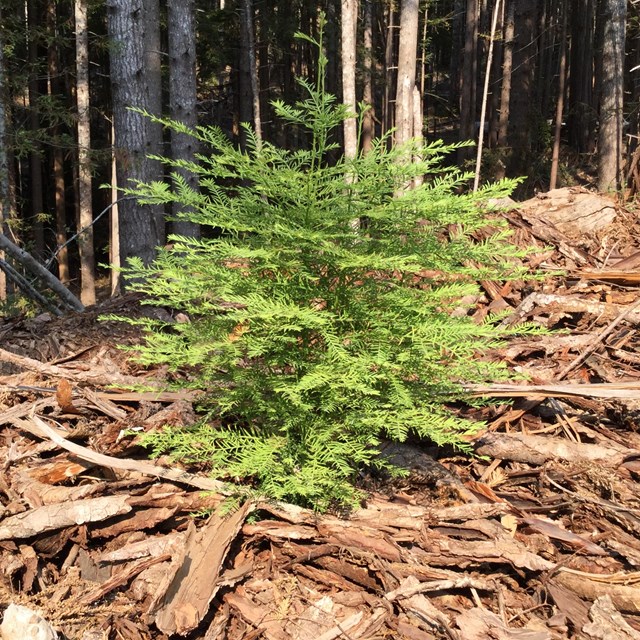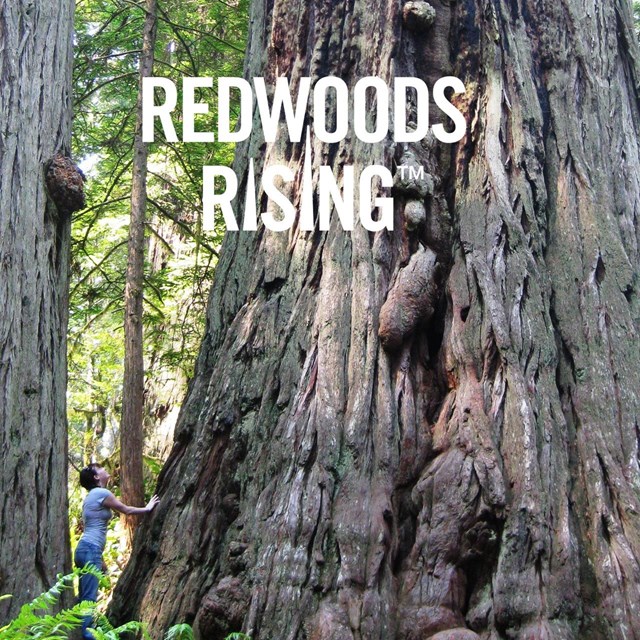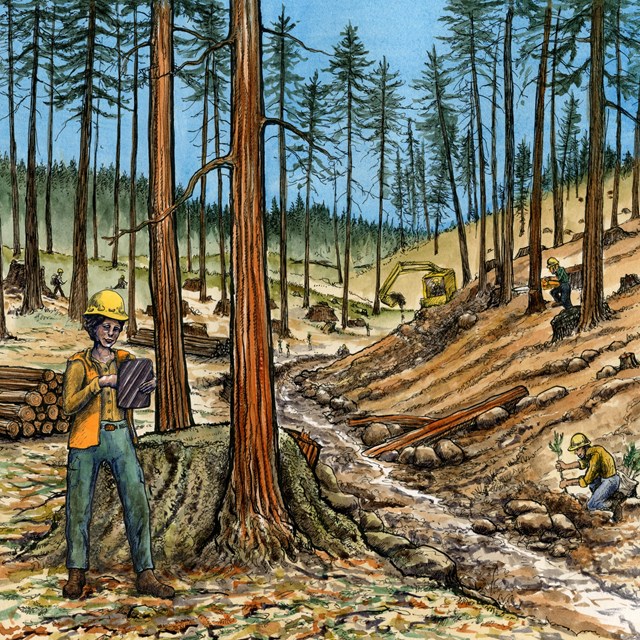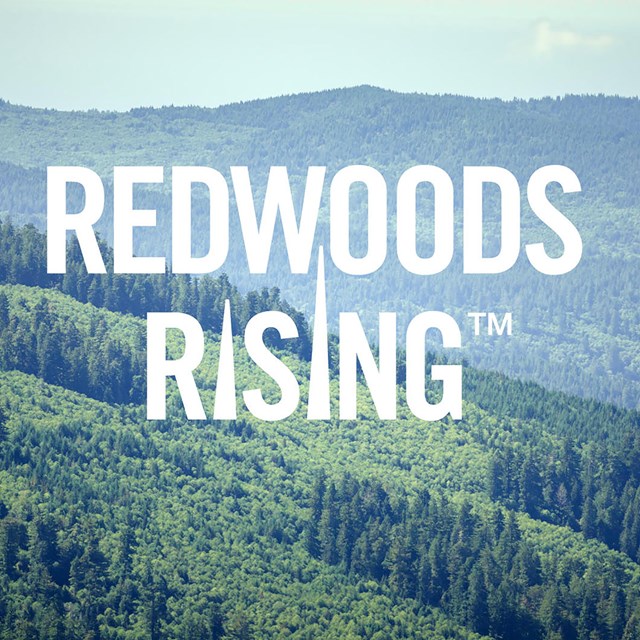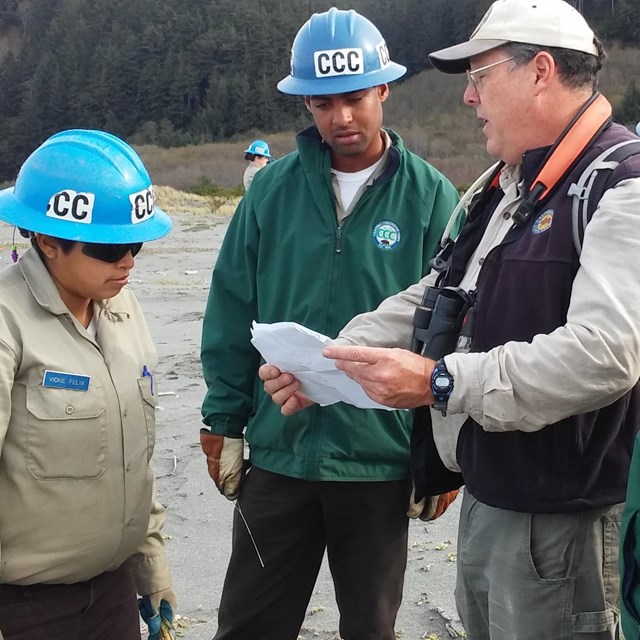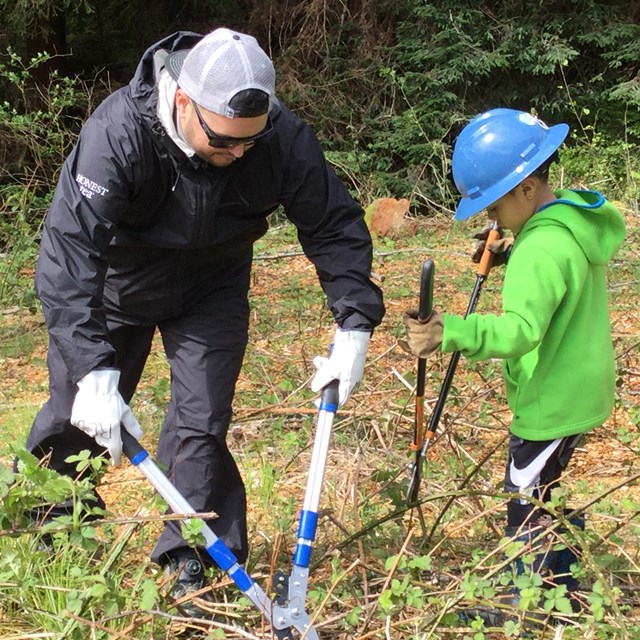Restoration Stories In The Redwoods
It's Taking A Village to Raise This ForestThis December 2019 video about restoration in the Redwoods highlights the work, challenges and goals of landscape-scale restoration projects in Redwood National and State Parks.
Redwood National and State Parks (RNSP) is not "pristine" and landscape-scale restoration programs are underway.Our habitat restoration programs are extensive - we have a lot more than redwood forests here. We also manage prairies, coast-lines, waterways, hillside habitats. Whether it's dune restoration, removing invasive plants, thinning second-growth forests, re-occupying and removing old logging roads, restoring rivers, having forest apprenticeships, or hiring people with cool job descriptions like Storm Patrol - our restoration efforts take time, partnerships, skills, science, public support, and funding.20th century industrial logging had disasterous impacts on the forests, rivers, and wildlife of the area. Because of the extent of the damage - and the ripple effects it continues to have on these ecosystems - these logged habitats are not able to restore themselves. For decades park managers at RNSP have been at work reversing those impacts - but on a limited scale. In 2018, an exciting partnership called Redwoods Rising officially began that brings together the skills and talents of different organisations to achieve landscape-scale habitat restoration across all of RNSP. Since the 1978 Redwood Expansion Act, ecological restoration has been the primary resource management goal of Redwood National Park. This role grew in 2002 when the Save the Redwoods League purchased lands in Mill Creek and donated it to Del Norte Coast Redwoods State Park. All these parks' lands were purchased from logging companies and private land-owners. The three California State Parks in our partnership (Jedediah Smith Redwoods, Del Norte Coast Redwoods and Prairie Creek Redwoods) were established in the 1920s and 1930s. The land for these state parks came from citizen groups like Save the Redwoods League and the state government that purchased sections of old-growth forests from private logging companies. These pockets of preserved redwood forests were an oasis of protected land during the next half century of logging. Old-Growth Forests compared to Second-Growth Forests 

Left image
Right image
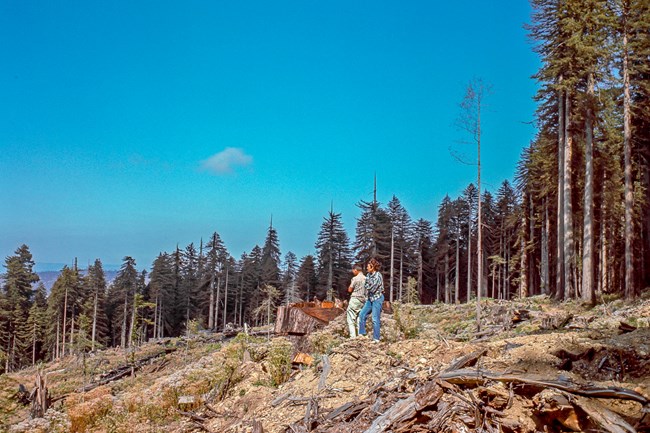
David Van De Mark Not All The Forests Are The SameRedwood National and State Parks (RNSP) is unusual in that many of the parks' ecosystems were not in a healthy condition when the parks were established or expanded. In 2018, 55% (more than 70,000 acres) of the forests in RNSP are second-growth forests. These grew up after the old-growth redwoods were clear cut and these young, second-growth forests are greatly degraded in their health. Only 30% (40,000 acres) of RNSP is old-growth redwood forests.More than 38,000 acres (70%) of the Redwood Creek watershed lands included in the national park's 1978 expansion were heavily disturbed timberlands. The 1978 aquisition included 415 miles of failing and abandoned logging roads. Del Norte Coast Redwoods State Park expanded in 2002 with the addition of twenty-five thousand acres in the Mill Creek watershed. This aquisition of logged-over lands included 329 miles of logging roads (not including skid roads or fire breaks). Those hundreds of miles of logging roads create more than scars on the landscape. When these roads fail, they cause landslides that can, and have, destroyed hillsides of old-growth redwoods. During the decades of logging, miles and miles of creeks and streams were also buried by debris and fill - causing a collapse of natural river systems, and the decimation of trout and salmon habitats. The Future Of RestorationRNSP is seen as a leader in efforts to restore of a variety of habitats and ecosystems. Since the late 1970s, great leaps forward in science, forestry, state and private partnerships, and park management have occurred to make these innovative restoration programs occur. At Redwood National and State Parks, more than 300-miles of legacy logging roads have been removed, thousands of acres of young forests have been treated, and hundreds of unnatural stream crossings and barriers have also been repaired or removed. But, there still is a lot more to do.Redwoods Rising is an exciting and new massive landscape-scale restoration program. Its focus is on the Greater Mill Creek (GMC) and Greater Prairie Creek (GPC) watersheds. These are important riparian areas where old-growth redwoods had been logged. These watersheds make up tens of thousands of acres of second-growth forests which we are slowly treating. The goal is that in a few human life-times, these once-logged landscapes will once again have healthy streams, rivers, and be covered with old-growth redwood forests. You can watch a short video how Redwoods Rising Is Putting Damaged Forests On A Better Path. Redwoods Rising will bring economic benefits to the community, and is ultimately likely to create additional hiking and biking opportunies in the park for visitors. We invite you find out what is going on behind the scenes. These are your parks. Experiences In Old-Growth and Second-Growth Forests 

Left image
Right image
|
Last updated: February 14, 2025


